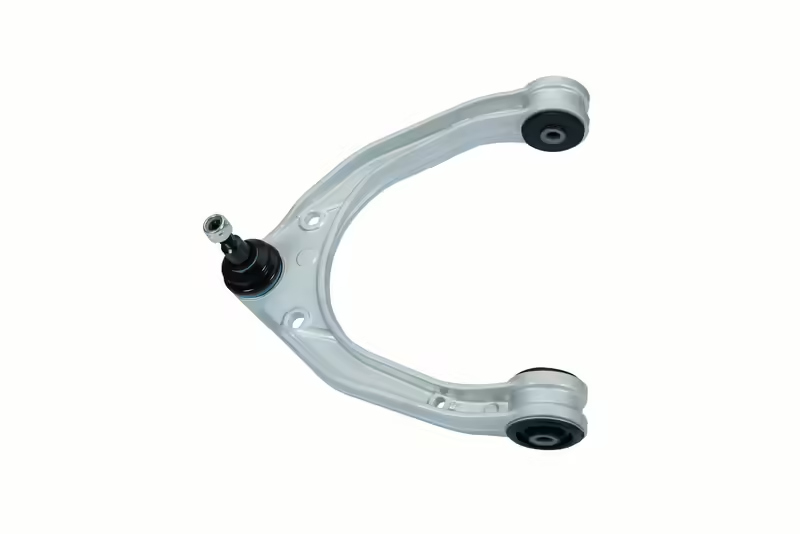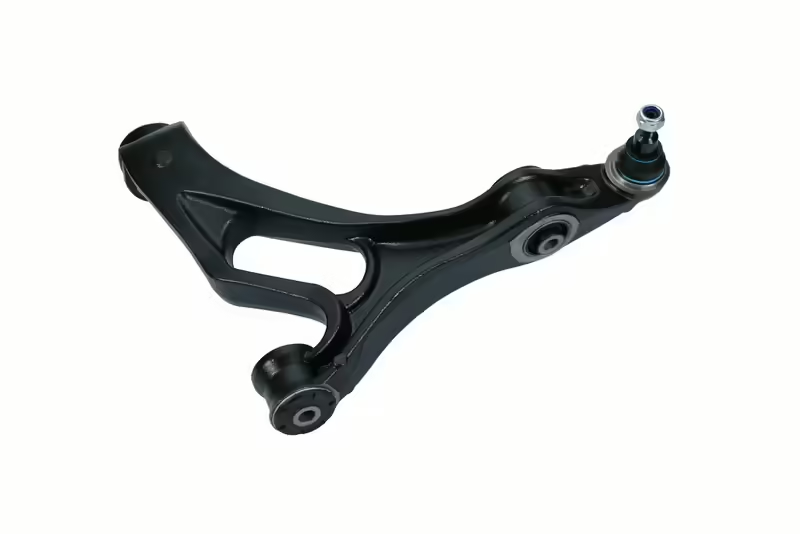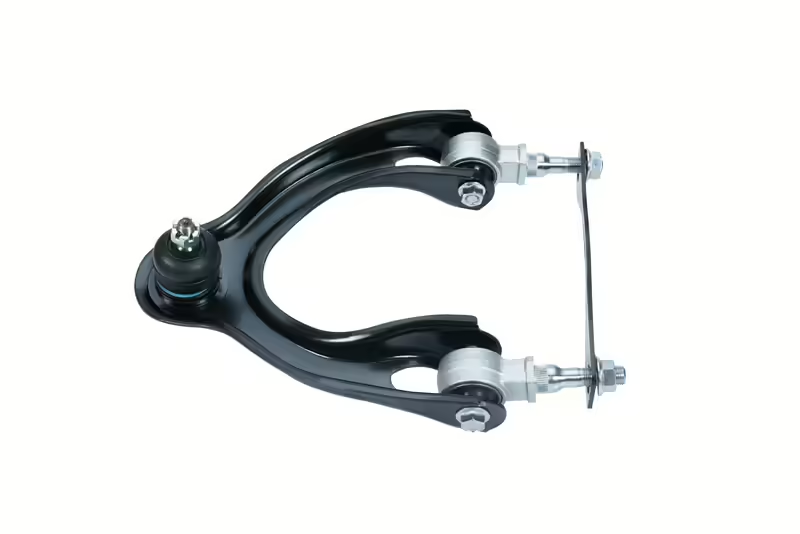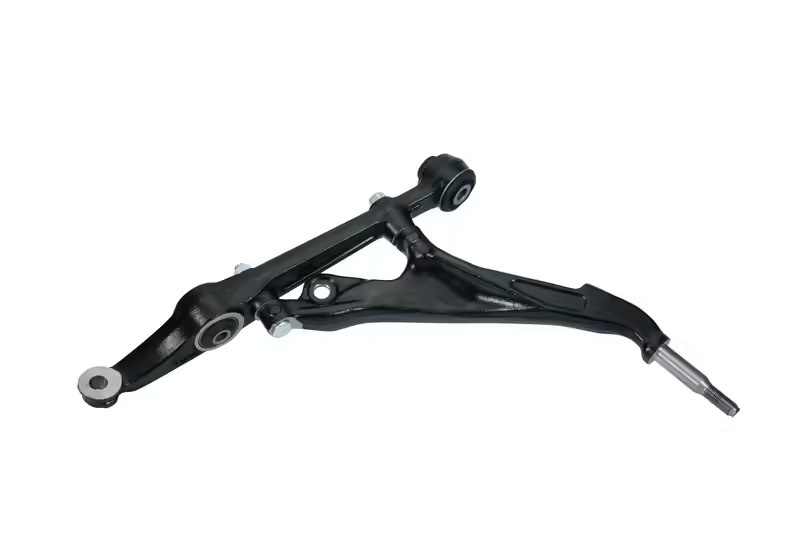Suspension Systems in Automotive Engineering
In the field of automotive engineering, the design and performance of the suspension system have a decisive impact on the vehicle’s handling, stability, and ride comfort. A well-designed suspension system not only maximizes the contact area between the vehicle and the road surface but also overcomes the effects of uneven road surfaces to ensure a comfortable passenger experience.
Among numerous suspension system designs, the double wishbone car suspension stands out for its superior performance, often recognized as an indicator of “sport car.” This article will delve into the working principles, component structure, and the crucial role of the double wishbone suspension system in enhancing automotive performance.
Comparative Analysis of Suspension Systems
In the comparative analysis of various suspension systems, we examine key aspects like ride comfort, handling, complexity, space usage, and cost. Discover how different systems like Multi-Link, Double Wishbone, Macpherson Strut, and Torsion Beam stack up against each other, helping you understand the trade-offs and benefits each offers to your driving experience.
Ride Comfort:
Multi-Link ≧ Double Wishbone>Macpherson Strut>Torsion Beam
Handling:
Multi-Link ≧ Double Wishbone>Macpherson Strut>Torsion Beam
Complexity:
Multi-Link> Double Wishbone>Macpherson Strut>Torsion Beam
Space:
Torsion Beam>Macpherson Strut>Multi-Link ≧ Double Wishbone
Cost:
Multi-Link= Double Wishbone>Macpherson Strut>Torsion Beam
What is Double Wishbone Car Suspension Good for?
The double wishbone car suspension system consists of two independent control arms, each connecting between the vehicle’s chassis and the wheel. This design, driven by the geometry of motion, not only effectively absorbs road vibrations but also maintains optimal contact between the tires and the road surface. Additionally, it provides more precise control over the position of the tires, minimizing tire displacement during cornering and resulting in superior handling performance.
Structure and Features of the Double Wishbone Suspension System
In automotive suspension systems, they can be broadly categorized into two main types: Independent and Non-independent suspensions.
Independent Suspension
Independent suspension refers to the scenario where, as one wheel of the vehicle passes over uneven road surfaces, the suspension of that specific tire side operates independently without affecting the other side.
Non-independent Suspension
Non-independent suspension means that the movement or disturbance caused by one side’s tire when traversing uneven terrain will have an impact on the other side’s tire. The double wishbone car suspension is a prime example of an independent system.
The double wishbone, also known as the “Double-A-Arm,” is arranged in an upper and lower configuration to enclose the center point of the tire. The term “Wishbone” is derived from the V-shaped bone structure in the chest of birds.
The rotation of the steering knuckle is facilitated by the ball joint structure at the apex end of the A-arm. As for the A-arm’s two lower ends, they are fixed to the vehicle body with a bushing, allowing the tire to move up and down with the road surface. The motion characteristics are determined by the virtual line connecting the two ball joints at the end of the A-arm and the angle formed with the vertical line to the ground, known as SAI/KPI.1
Composition of Double Wishbone Car Suspension System
Upper A-Arm (AKA Upper Control Arm)
The “A”-shaped control arms have rubber bushing attached to their two lower ends, securing them to the chassis or subframe. The rubber bushing at the bottom serves as a cushion, preventing direct metal-to-metal contact (between the chassis and control arms), thereby extending the lifespan of the components and increasing comfort.
The top end of the “A”-shaped control arm is equipped with a ball joint structure, which is connected to the steering knuckle, allowing the steering knuckle to rotate freely. Sometimes, the ball joint on the upper control arm is referred to as the “Upper Ball Joint,” Typically, the upper control arm is shorter than the lower control arm.

This is a upper control arm for VAG Group, it is a typical upper arm made of aluminum. Since upper arm usually do not hold the body weight, it is a good idea to put aluminum arm under this condition, which can help the weight reduce. However the rising cost of aluminum should also be considered.
Lower A-Arm (AKA Lower Control Arm)
The lower control arm is similar to the upper control arm, except that the ball joint on the lower control arm is referred to as the “Lower Ball Joint”

This is a LOWER control arm for VAG Group, it is a typical lower arm made of steel. Lower are hold more body weight instead of upper arm. Moreover, it is also bigger than upper arm; The cost is one possibility of VAG Group choose the steel as a material to produce this part. VAG is a gigantic automotive maker they often share their parts to their subsidiaries.
Shock Absorber Assembly (Damper & Spring)
Responsible for absorbing tire vibrations and supporting the weight of the vehicle body, the shock absorber is typically installed on the lower control arm to maximize its travel length.
Steering Knuckle
The steering knuckle is responsible for the vehicle’s steering. Typically, there are several connection points in the double wishbone setup, it connects to the upper control arm at the upper part, to the lower control arm at the lower part.
Also there is a connection point linked to the tie rod end, connecting it to the steering system to achieve steering. The specific location of these connections may vary depending on the vehicle manufacturer’s design.
Advantages and Disadvantages of Double-Wishbone Suspension
The double wishbone car suspension offers a significant advantage in terms of design flexibility. By adjusting the length, position, and SAI angle of all the mentioned links (control arms), one can make any desired modifications to the suspension geometry, including camber, roll center, anti-dive, and instant center.
As listed above, the advantage of the double-wishbone suspension lies in its considerable design flexibility. Engineers can adjust various aspects according to the requirements during the design process. Additionally, compared to the MacPherson strut, the formation line of the SAI angle is supported by the ball joint of the upper control arm. This arrangement allows the suspension assembly to remain unaffected by external forces during turns, thereby enhancing the stability of the vehicle body. Furthermore, the connection method with the four attachment points to the vehicle body (bottom of the two A-arms) contributes to the solidity of the car and filters out unstable vibrations.
However, the requirement for more components implies a disadvantage in terms of space and cost, making vehicles with a double-wishbone suspension system more common in sporty or luxury cars.
Which Cars Use Double Wishbone Suspension Systems?
The double wishbone car suspension is a feature of high-performance and luxury cars, with brands like AUDI, BMW, Ferrari, and M-BENZ incorporating it into their top-tier models.
AUDI
- A8(4H etc.)
BMW
- 5-series (G30 etc.)
- 7-series (G11、G70 etc.)
Ferrari
- 812 Superfast
- Purosangue
HONDA
- CIVIC (EG etc.)
- ACCORD (7gen etc.)
MERCEDES-BENZ
- S-Class (W222、W223 etc.)
- E-Class (W212 etc.)
From the above list of vehicle models, we can understand that the double wishbone car suspension is typically featured in top-tier models of high-performance or luxury automotive brands, such as the S-class and 7-series. As Honda is positioned as an affordable brand, it would be expected to utilize other, lower-cost suspension systems. However, in the early days, Honda placed a significant emphasis on chassis performance and often equipped its vehicles with double-wishbone suspension to enhance handling. This is also why Honda has garnered a devoted fanbase worldwide.
Furthermore, vehicles equipped with a double wishbone suspension system typically do not belong to the FF (front-engine, front-wheel-drive) model due to constraints related to insufficient space in the engine compartment and cost considerations.
The pictures above are the control arms of Honda Civic V; this is one of the reason why civic has eared such high respect. They are made of steel, but it’s a standard double wishbone design. Look how sophisticated the upper arm bushings are; and of course the lower arm also. The lower arm is even separable. Back in those days (1991-1995), Civic’s MSRP was around 10,000 USD, one of the cheapest car in the world. Although it was cheap, the owner could still got driving pleasure with this model. This is because Civic was equipped with double wishbone and complex designation. As motioned before, Why there are so many fans of HONDA in the worldwide? This is probably one of the answer.
Versatility in Double Wishbone Suspension Designs
Due to its design flexibility can become highly versatile and intricate. This article will not discuss the impacts brought about by various geometries; instead, the following will outline some possible combinations of double-wishbone setups.
Length of Control Arm:
- Equal Length: Control arms are of the same length.
- Unequal Length: Control arms can have variations, either with the upper arm shorter and the lower arm longer or vice versa.
The Control Arm Angles:
- Parallel:
Control arm bottom height = Steering knuckle joint height - Non-parallel:
Control arm bottom height > Steering knuckle joint height
Control arm bottom height < Steering knuckle joint height
Different Name of Double Wishbone
In naming the suspension design for their vehicles, some automakers often employ different logic. Taking the flagship models of two German brands, M-BENZ and BMW, as examples, when we delve into the front suspension layout of the S-Class and 7-Series, we find that both manufacturers use the same suspension layout.
They split the lower “A” arm into two “I”-shaped control arms, with both endpoints fixed on the steering knuckle, forming a “V”-shaped control arm. Should such a design be referred to as a double-wishbone or a multi-link? Referring to Mercedes-Benz’s specifications brochure, it is labeled as 4-wheel multilink, while BMW labels it as a double-wishbone. Therefore, we can conclude that even with the same design, different manufacturers often use different names.
Maintenance Challenges in Double Wishbone Car Suspension
Due to the congenital complexity of multiple components and intricate design, symptoms of aging become apparent as the mileage of a vehicle with a double wishbone car suspension increases or when usage habits differ. With numerous connection points, there is also an increased likelihood of noise. Additionally, aging often accompanies a condition where precise alignment cannot be maintained (even after a recent alignment, it feels like the wheels are misaligned again). In such cases, if the alignment machine appears to have issues, it is often a sign that the control arms have deformed and need replacement.
Conclusion
In conclusion, the double wishbone car suspension system offers remarkable design flexibility and superior performance. It excels in providing a comfortable ride, precise handling, and the ability to adapt to various suspension geometries. While it is commonly found in high-performance and luxury vehicles, its versatility in design allows engineers to tailor it to specific needs.
However, it’s essential to be aware of potential maintenance challenges as these systems age. Overall, double wishbone suspension remains a key component in enhancing the driving experience and stability of many vehicles on the road today.
References
- Chassis Handbook Bernd Heißing, Metin Ersoy (2010)
- Chassis Engineering Herb Adams (1992)
- 自動車のサスペンション KYB株式会社 (2013)
- 車両運動性能とシャシーメカニズム 宇野高明 (2022)
- Public information form Auto Maker Official Website
Related articles:
Aluminum Control Arms: What are the Features and Benefits?
6 Symptoms of Bad Control Arm: Causes, Prevention & Solutions
Components of Suspension System: What are the Functions?
- *SAI: Steering Axis Inclination / KPI: Kingpin Inclination ↩︎


